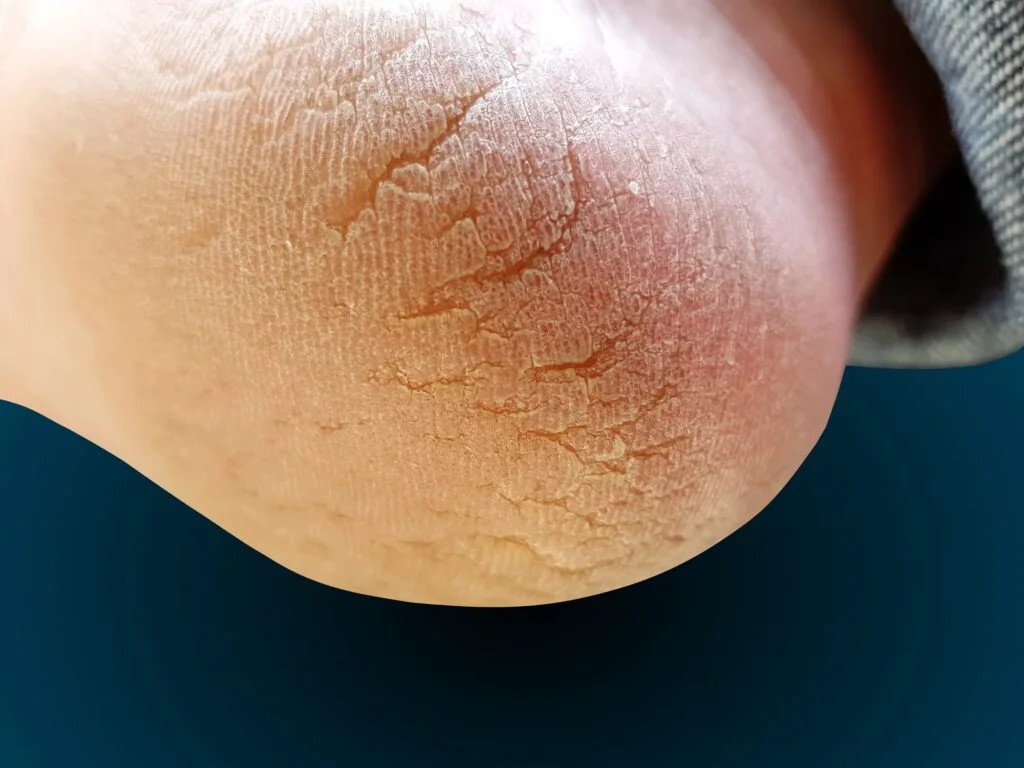Table of Contents
What Are Cracks and Fissures?
Cracks and fissures are breaks in your skin. They may be the result of skin that is too dry to too moist. When skin is too dry, it can become rough and flaky. A large fissure often forms at the base of the heel. When skin is too moist, you may get a bacterial or fungal infection. This can cause cracks between the toes. People who often walk barefoot or wear open shoes are at risk for dry skin. People who wear shoes without socks or shoes and socks that don’t breathe well are at risk for moist skin problems. Your doctor can treat your cracks and fissures. You can help prevent future problems by wearing proper shoes.
What Causes Cracks and Fissures?
Your skin is a complex organ that requires the right amount of moisture to stay healthy. It can be hard to achieve the right balance of moisture in your feet. When skin is too dry or too moist, cracks or fissures may appear.
When Skin Is Too Dry
Walking barefoot can strip your skin of its natural oil. So can wearing sandals or open shoes. Natural oils form a protective layer on your skin. Without enough oils, skin may crack. Cracks may widen, becoming deep fissures. These fissures may not be able to heal on their own. Cracks and fissures leave your foot open to infection.
When Skin Is Too Moist
Moist skin can result from not drying feet after bathing, or from excess sweat. Wearing shoes without socks or shoes that don’t ventilate can trap sweat on your feet. Overly moist skin can encourage bacteria and fungus to grow. This weakens your skin, leading to cracks. Fungus can progress to athlete’s foot or thick fungal nails
Your Physical Exam
Your doctor will ask you questions about your medical history and current symptoms. He or she will also talk to you about the kinds of shoes you wear. Your doctor will then inspect your feet for breaks in the skin, growths, drainage, and redness. Your skin may also be tested for fungus.
Treatment
If moist skin is causing fungus or bacteria, your doctor may apply medication to your feet. You may be given an antifungal foot soak or lotion to take home. Oral medications may also be prescribed. If you have dry skin, your doctor may remove rough patches with a pumice or special lotion. Fissures may be taped to help them heal. An antibiotic ointment may be prescribed to soothe cracks and prevent infection.
Caring For Your Feet
Your doctor will treat cracks and fissures in the office. You can also try the tips below.
Caring for Dry Skin
- Use moisturizer on your feet after bathing and at bedtime
- Ask you doctor before using a pumice stone to reduce calluses.
- Never walk barefoot. Avoid sandals and other open shoes.
Caring for Moist Skin
- Always dry between your toes after bathing. Don’t apply moisturizer between toes.
- Ask your doctor about using antifungal powders and lotions or special foot
antiperspirants. - Choose cotton socks instead of nylon.
Checking Feet Daily
Whether you have dry or moist skin, check your feet daily. Look at the top and bottom of your feet and between your toes. You may need to use a mirror. Call your doctor if you notice redness, swelling, or increased heat.
Using Proper Footwear
Choose well-fitting canvas or leather shoes that allow skin to breathe. Avoid synthetic shoes that trap moisture. Disinfect or replace shoes as often as your doctor suggests. And always wear shoes with socks, even at home.



